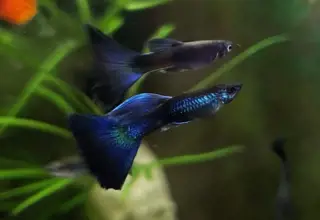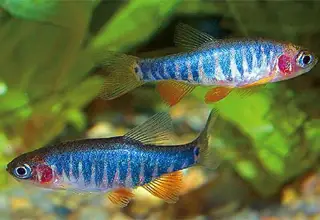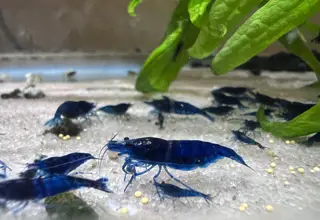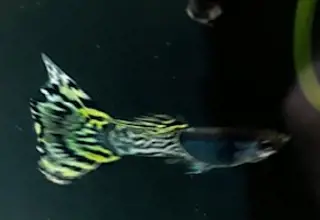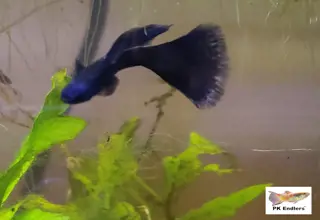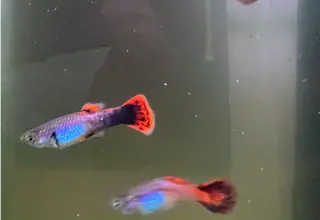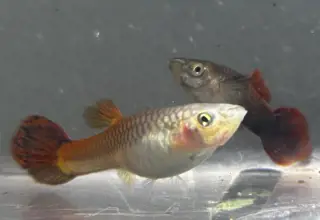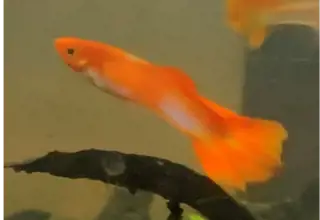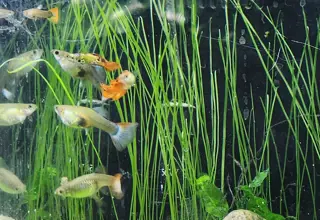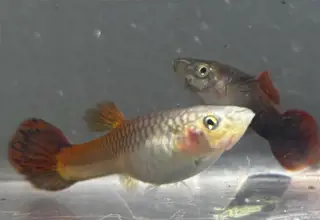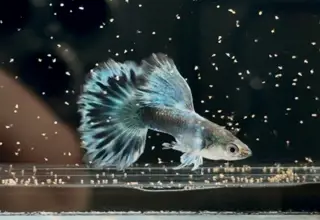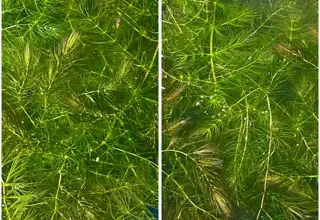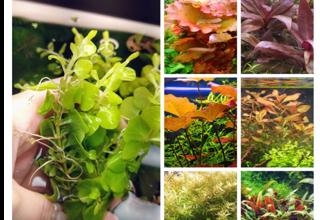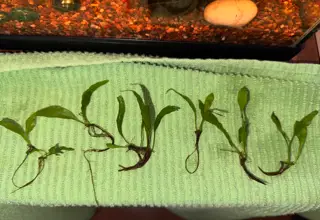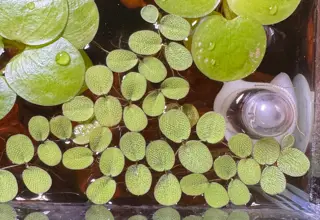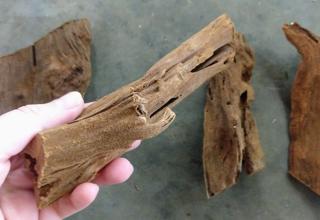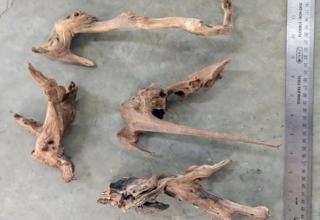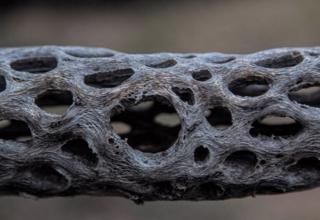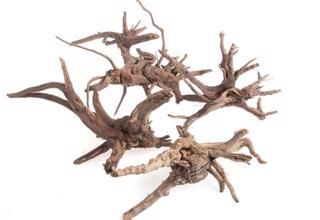Blue Emperor Tetra: Size, Tank Mates, Temperament & More
Posted by Miles Harrison on 11/29/2022
We use affiliate links and may receive a small commission on purchases.
When people think of tetra fish, often the most common species come to mind. Cardinal tetras and neon green tetras are some of the most popular in the freshwater aquarium scene, but lesser-known species have been making their way around aquarium circles for quite some time.
One of these fish is known as the Blue Emperor Tetra (scientific name: Inpaichthys kerri), and they are some of the most attractive tetra fish available in the hobby. If you’re interested in making this species the next addition to your fish tank, we’re going to cover all of the important topics you’ll want to be aware of before pursuing this exciting fish. Let’s begin.
Species Summary
The Blue Emperor Tetra (scientific name: Inpaichthys kerri) was first classified by Brazilian biologist Wolfgang J. Junk and French ichthyologist Jacques Géry in 1977. Named after Warwick Estevam Kerr, the director of the Instituto Nacional de Pesquisas da Amazônia, the species has earned quite a few alternate names throughout the years, with some hobbyists referring to this fish as the Royal Tetra or Purple Emperor Tetra. It is common to see Emperor Tetras (scientific name: Nematobrycon palmeri) sold as Blue Emperors, but make no mistake, these are two different fish. To complicate things a bit more, there is also a line-bred “Super Blue” strain of Blue Emperor Tetras. Both the line-bred “Super Blue” variant and wild form are fascinating species and will be appreciated by new and experienced aquarists.
These fish are native to the Aripuanã River in Brazil, where they live in warm, slow-moving waters. They are the sole members of their genus and descend from the Characidae family of freshwater fish.
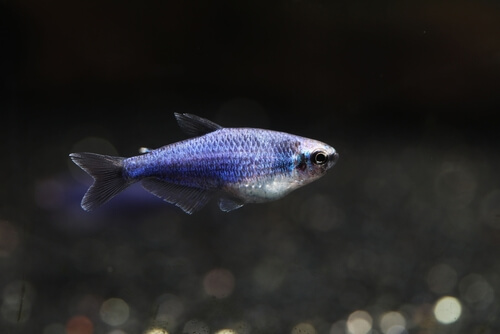
Appearance
If these fish remind you of small piranhas, there’s a reason why, as these fish are closely related. Blue Emperor Tetras have slender bodies, with translucent fins that transition to a purplish-hue along the fin's edge. They have black eyes and an all-white underbelly. Their upturned mouths give them a unique advantage in consuming surface-floating food sources.
Wild-type Blue Emperor Tetras tend to have blue bodies, and only the males have a blue coloration towards their tail fins. Females will have a beige-brown coloration near their tail fins.
In the “Super Blue” variant, both males and females have blue throughout the body of the fish. Juvenile “Super Blues” will also turn blue much quicker than their wild-type counterparts.
Size
Blue Emperor Tetras are small fish and adults will grow to reach about 1.5 inches in length.
Providing Blue Emperors with a well-balanced diet and stress-free lifestyle will improve the chances that these fish will grow to reach their full adult size.
🛒 Shop Freshwater Fish on Light Fish
Blue Emperor Tetra Care
Luckily for hobbyists looking to own the wild-type or super blue emperor tetra, their care is relatively straightforward. Their needs are similar to most other tetra fish, and you should have no problem keeping this species around for its full life expectancy.
That being said, it’s your responsibility as the owner of these fish to give them the best lives possible. You’re going to want to recreate the natural habitat of these fish as closely as possible. It’s no easy feat, but with the proper knowledge, it most certainly can be done.
Lifespan
Blue Emperor Tetras live for about six years in captivity. Providing your blue emperors with a well-balanced diet and optimal water conditions will improve the chances that your fish will live to reach their full life expectancy.
Typically, these fish will be sold as juveniles. Always inquire about the age of your fish before purchasing so that you have some idea of their life expectancy.
Tank Size
You’re going to want to have an aquarium that’s at least 15 gallons in size if you plan on keeping Blue Emperor Tetras. If you’re planning on keeping more than 5 of these fish, you’ll want to go even bigger.
Blue Emperor Tetras cannot be kept alone. You’ll need at least 3 of these fish, otherwise, they will easily become stressed which will greatly weaken their immune systems. Having a larger aquarium means you’ll be able to add additional Blue Emperor Tetras, and will give them plenty of space to swim when they’re schooling.
Water Conditions
Whether you’re planning on housing these fish in a standard freshwater aquarium or a CO2-injected planted tank, you’ll be pleased to know that these fish will adapt quite readily to most aquarium conditions.
In the wild, these fish originate from the slightly-acidic waters of the Amazon Basin. Luckily, if your water is on the hard side, these fish can do well in higher-pH ranges. Just be sure to acclimate them before any dramatic changes in water chemistry.
Overall, you’ll want to aim for the following water conditions to give you the best chance at success with these fish:
Temperature Range: 76°F-80°F
KH: 4-8 dKH
pH: 5.5-7.0
Providing these conditions for the duration of your Blue Emperor Tetra’s life will reduce the chances that they’ll encounter health-related issues.
Tank Setup
There are an almost endless amount of tank configurations and aquascapes you can create with Blue Emperor Tetras. Gravel-based substrates, such as Fluval’s Stratum or Bio-Stratum are some of our favorites for Blue Emperor Tetras, as the black-colored substrate contrasts quite nicely with the vibrant blue coloration of these fish. For the most part though, any type of substrate will work well with these fish.
You’ll want a reliable filter, cannister filters or HOB (hang-on-the-back) filters from Fluval are excellent options. Just be sure to get a filtration system that’s rated for your aquarium size. Otherwise, you’ll want to add foam mesh to the filter intakes to prevent your fish from getting sucked into the filter inflow.
An aquarium heater is also a must with these fish. Since they come from warm-water environments, a submersible heater or in-line heater should get the job done. Optionally, an aquarium thermometer can be purchased to monitor temperatures.
Blue Emperor Tetras will appreciate having plenty of live plants, and while these plants will also provide a form of shelter and safety to your fish, they’ll also help purify the water, removing ammonia and toxins that are harmful to your fish. Aquatic plants such as Hygrophila Salicifolia and Nymphoides Hydrophylla are great options for plants that grow quickly and are easy to take care of. Slow-growing plants, like Anubias Frazeri also look excellent in a Blue Emperor Tetra aquarium. Red aquatic plants can add a nice pop of color, and contrast nicely with the coloration of a Blue Emperor Tetra.
Natural rock can create a unique hardscape, layouts with seiryu stones and ryuoh stones are great if you’re going for a minimalist aquascape. If you’re into driftwood, Mopani, Cholla, and Spider driftwood are all great options as well.
The key to a gorgeous Blue Emperor Tetra tank is to keep the look as natural as possible. Avoid plastic plants, as these can leach harmful chemicals into your water columns, and they can also tear the delicate fins of a Blue Emperor.
Common Diseases
Blue Emperor Tetras are susceptible to the same diseases that affect most other Tetra fish. Ich, or White Spot Disease, is one of the most common parasites in the aquarium hobby, and it’s diagnosed by the formulation of small white capsules that appear over your fish’s gills, body, and fins.
If you notice these small crystal-like spots, you’ll want to treat your fish right away with a solution like Aquarium Solutions Ich-X. You’ll want to dose the recommended amount combined with 30% water changes daily until you no longer see signs of the disease.
Another common disease is known as Fin Rot. Although it’s not as apparent as it is in long-tailed species, such as the Galaxy Koi Betta or Purple Moscow Guppy, fin rot can affect Blue Emperor Tetras, and it’s usually brought on by poor water quality.
If you’ve been neglecting water changes, or fish waste has accumulated resulting in an ammonia spike, your fish may have a weakened immune system and are suffering from this bacterial infection.
Luckily, treatment is straightforward. Perform daily 30% water changes for 1 week until Ammonia and Nitrite levels have reached 0ppm. A reliable aquarium test kit can help ensure you’ve reached these levels. Remove any waste that’s accumulated along the aquarium substrate.
After you’ve gotten things under control, continue feeding your Blue Emperor Tetras a well-balanced diet. Remove any potential causes of stress such as aggressive tank mates. In time, your fish’s fins should repair themselves. However, in some cases, the fins will never recover and the damage will be permanent.
🛒 Shop Aquarium Plants Fish on Light Fish
Food & Diet
Blue Emperor Tetras should be fed nutrient-rich flake food and pellet food, 1-2 times a day for no longer than 2 minutes. In the wild, these fish are omnivores and will feed off insect larvae, algae, and small crustaceans.
You can supplement your Blue Emperor Tetra’s diet with thawed frozen daphnia, brine shrimp, and black worms. Blood worms can also be fed as an occasional treat. Providing your Blue Emperor Tetras with a well-balanced diet will bring out the best of their colors.
Behavior and Temperament
If you’re looking for a peaceful fish, then the Blue Emperor Tetra might be a perfect choice. These fish are very laid back and can be seen cruising around the aquarium looking for new food sources. Blue Emperor Tetras are not fin nippers, but they do occasionally chase each other around the tank. Whether this behavior is just for play or it’s a display of dominance-based hierarchy, it’s certainly fun to observe in a home aquarium.
Occasionally these fish will form schools and move in unison around the aquarium. Providing plenty of open space will encourage these fish to school. Their schooling ability lands them on our list of 10 best nano schooling fish and is one of many reasons why this fish is so sought-after.
Tank Mates
We love a species-only Blue Emperor Tetra aquarium, you can keep as many Blue Emperors together as your tank size will allow, but if you’re looking to switch it up a bit and add some other species of fish, you have plenty of possibilities. As long as you have an aquarium that’s suitable in size for additional tank mates, you can add most types of peaceful fish or invertebrates.
Some of our favorite tank mates for the Blue Emperor Tetra include:
-
Cardinal Tetras
-
Neon Tetras
-
White Cloud Mountain Minnows
You can’t go wrong with any of these options, and there are plenty more out there, but you should be warned that there are still some species you’ll want to avoid.
If you plan on keeping Blue Emperor Tetras, avoid the following aggressive species:
These species will bully and harass your Blue Emperor Tetras, causing stress and ultimately weakening their immune systems.

Breeding
Blue Emperor Tetras breed readily in a suitable environment, but we think it’s best to first establish a dedicated breeding tank
You’ll want to re-create the acidity of their native habitat, so aim for a pH of around 7.0. Similar to breeding other types of freshwater fish, you’ll also want to raise the temperature quite a bit. In the breeding tank, with a reliable aquarium heater, increase the temperature to about 81-82 °F.
Once you’ve established a bonded pair of Blue Emperor Tetras, you’ll want to move them into the established breeding tank. In this tank, you should have plenty of available plants to protect the eggs. If live plants aren’t an option, an artificial spawning mop can be used instead.
You’ll want to feed the bonded pair nutrient-rich food to encourage breeding. Live food can be fed, such as micro worms, brine shrimp, and fruit flies. When you notice the female's underbelly starting to expand, you can move the fish into the breeding tank. Breeding will typically happen within a day or two.
Once the female has laid her eggs, you can move both fish back into your display tank. After about a week or so, the fry will start to swim, and you can feed them Infusoria. Over the next few weeks, you can start feeding baby brine shrimp, and chopped-up flake foods. Perform 25% semi-daily water changes to maintain cleanliness in the fry tank. If you have live plants, you can do a 20% water change once a week instead. After a few months have passed, you’ll have successfully bred the Blue Emperor Tetra.
In Conclusion
As you can tell, the Blue Emperor Tetra is an excellent option for a freshwater aquarium. They are an attractive and easy-to-care-for species that look fantastic in any aquarium.
If you’re interested in learning more about this species, visit our community forum where we discuss Blue Emperor Tetras and everything fishkeeping-related in more detail.
December's Giveaways on Light Fish
